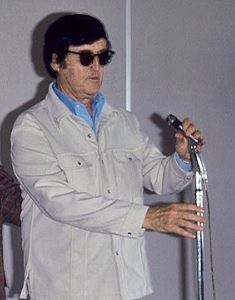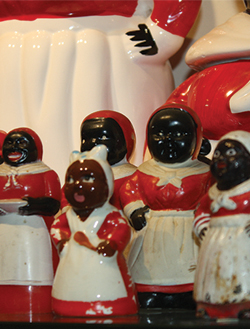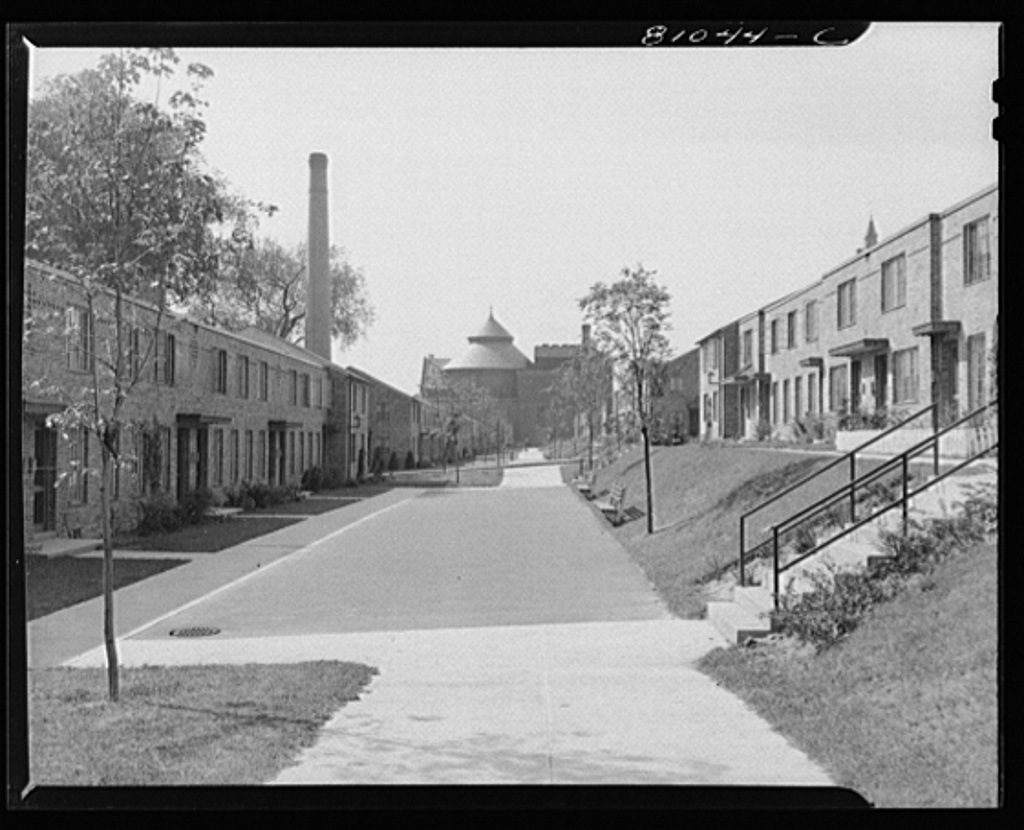|
A Coy Decoy
''A Coy Decoy'' is a 1941 Warner Bros. ''Looney Tunes'' cartoon, directed by Bob Clampett. The cartoon was released on June 7, 1941, and stars Porky Pig and Daffy Duck. The film is set in a closed book store at night, when the many characters and elements featured within the books come to life, similar to Frank Tashlin's own shorts ''Speaking of the Weather'', '' Have You Got Any Castles?'', and ''You're an Education''. The idea would later be reworked five years later into ''Book Revue'', although only Daffy features in that. Plot The film begins with Ludwig van Beethoven's "Moonlight Sonata" playing as the scene descends on a book store. The camera pans across an array of the bestselling books of early 1941 (including Valtin's ''Out of the Night'', Fedorova's ''The Family'', and Nordhoff and Hall's ''No More Gas''), before reaching an older favorite, ''Uncle Tom's Cabin,'' which as a gag has a Federal Housing Administration sign in front of the cabin. Porky Pig, featured on th ... [...More Info...] [...Related Items...] OR: [Wikipedia] [Google] [Baidu] |
Bob Clampett
Robert Emerson Clampett Sr. (May 8, 1913 – May 2, 1984) was an American animator, director, producer and puppeteer. He was best known for his work on the '' Looney Tunes'' animated series from Warner Bros. as well as the television shows ''Time for Beany'' and ''Beany and Cecil''. He was born and raised not far from Hollywood and, early in life, showed an interest in animation and puppetry. After leaving high school a few months shy of graduating in 1931, he joined the team at Harman-Ising Productions and began working on the studio's newest short subjects, ''Looney Tunes'' and '' Merrie Melodies''. Clampett was promoted to a directorial position in 1937. During his 15 years at the studio, he directed 84 cartoons later deemed classic, and designed some of the studio's most famous characters, including Porky Pig, Daffy Duck and Tweety. Among his most acclaimed films are ''Porky in Wackyland'' (1938) and ''The Great Piggy Bank Robbery'' (1946). He left Warner Bros. Cartoons ... [...More Info...] [...Related Items...] OR: [Wikipedia] [Google] [Baidu] |
Book Revue (film)
''Book Revue'' is a 1946 Warner Bros. ''Looney Tunes'' cartoon directed by Bob Clampett. The cartoon was released on January 5, 1946, and features Daffy Duck. The plotline is a mixture of the plots of Frank Tashlin's '' Speaking of the Weather'' (1937), '' Have You Got Any Castles?'' (1938) and Clampett's own '' A Coy Decoy'' (1941). Plot The cartoon starts out in the same, pastoral "after midnight at a closed bookstore" fashion of Frank Tashlin's trio of "books coming to life" cartoons, to the strains of ''Moonlight Sonata''; a colorized version of the storefront from ''A Coy Decoy'' can be seen. Inside, an inebriated "cuckoo bird" pops out of a cuckoo clock to announce the arrival of midnight (and signaling the "cuckoo" activities to follow) and the books come alive. The first of these is a book collection called ''"Complete Works of Shakespeare"''. Shakespeare is shown in silhouette while his literally-rendered insides ("works") are functioning clockwork mechanisms, along wi ... [...More Info...] [...Related Items...] OR: [Wikipedia] [Google] [Baidu] |
Hare-um Scare-um
''Hare-um Scare-um'' is a 1939 Warner Bros. ''Merrie Melodies'' cartoon directed by Ben Hardaway and Cal Dalton. The short was released on August 12, 1939, and is the third short to feature the rabbit that would evolve into Bugs Bunny. The title is a homonym with an old nonsense expression — "harum-scarum", meaning reckless or irresponsible. This was the first use of a hare-based pun title in the Warner Bros. cartoons; it would be a device used to name many Bugs Bunny cartoons in the years to come. Plot A man (named as John Sourpuss in the copyright synopsis) reading a newspaper comes across an article stating that meat prices have soared and the consumers are sore. Angry, he declares that he'll hunt his own meat to get back at the government for the price inflation. He takes his dog with him, revealing he is going hunting for rabbits. In the woods, a rabbit leads the dog into a hollow log and pushes the log down a hill, where it smashes into a tree. Meanwhile, John sees seve ... [...More Info...] [...Related Items...] OR: [Wikipedia] [Google] [Baidu] |
Maurice Chevalier
Maurice Auguste Chevalier (; 12 September 1888 – 1 January 1972) was a French singer, actor and entertainer. He is perhaps best known for his signature songs, including " Livin' In The Sunlight", " Valentine", "Louise", " Mimi", and "Thank Heaven for Little Girls" and for his films, including ''The Love Parade'', ''The Big Pond'', ''The Smiling Lieutenant'', '' One Hour with You'' and ''Love Me Tonight''. His trademark attire was a boater hat and tuxedo. Chevalier was born in Paris. He made his name as a star of musical comedy, appearing in public as a singer and dancer at an early age before working in menial jobs as a teenager. In 1909, he became the partner of the biggest female star in France at the time, Fréhel. Although their relationship was brief, she secured him his first major engagement, as a mimic and a singer in ''l'Alcazar'' in Marseille, for which he received critical acclaim by French theatre critics. In 1917, he discovered jazz and ragtime and went to London, ... [...More Info...] [...Related Items...] OR: [Wikipedia] [Google] [Baidu] |
Beat Me Daddy, Eight To The Bar
"Beat Me Daddy, Eight to the Bar" is a song written in 1940 by Don Raye, Hughie Prince, and Ray McKinley. It follows the American boogie-woogie tradition of syncopated piano music. Background The title adopts 1940s' hipster slang coined by Raye's friend, Ray McKinley, a drummer and lead singer in the Jimmy Dorsey band in the 1930s. McKinley kicked off certain uptempo songs by asking pianist Freddie Slack (nicknamed "Daddy") to give him a boogie beat, or "eight to the bar". McKinley, in a discussion with the jazz writer George Simon relates, "We were playing one of them (a boogie, blues) one night at the Famous Door and two songwriters, Don Raye and Hughie Prince, were there. There was one part where I had a drum break, and for some reason or other that night, instead of playing the break, I sang out, "Oh, Beat Me, Daddy, Eight to the Bar." After the set, Hughie called me over to the table and asked if they could write a song using that break. I told him to go ahead and they offe ... [...More Info...] [...Related Items...] OR: [Wikipedia] [Google] [Baidu] |
Decoy
A decoy (derived from the Dutch ''de'' ''kooi'', literally "the cage" or possibly ''ende kooi'', " duck cage") is usually a person, device, or event which resembles what an individual or a group might be looking for, but it is only meant to lure them. Decoys have been used for centuries most notably in game hunting, but also in wartime and in the committing or resolving of crimes. Hunting In hunting wildfowl, the term decoy may refer to two distinct devices. One, the duck decoy (structure), is a long cone-shaped wickerwork tunnel installed on a small pond to catch wild ducks. After the ducks settled on the pond, a small, trained dog would herd the birds into the tunnel. The catch was formerly sent to market for food, but now these are used only by ornithologists to catch ducks to be ringed and released. The word ''decoy'', also originally found in English as "coy", derives from the Dutch ''de Kooi'' (the cage) and dates back to the early 17th century, when this type of duck ... [...More Info...] [...Related Items...] OR: [Wikipedia] [Google] [Baidu] |
The Wolf Of Wall Street (1929 Film)
''The Wolf of Wall Street'' is a 1929 American pre-Code drama film directed by Rowland V. Lee and starring George Bancroft, Paul Lukas, Olga Baclanova, and Nancy Carroll. The story and screenplay were written by Doris Anderson. Originally made as a silent film, ''The Wolf of Wall Street'' was completely re-filmed with sound, becoming Bancroft's first talkie. The plot concerns a ruthless trader (Bancroft) who corners the market in copper and then sells short, making a fortune but ultimately ruining the finances of himself and his friends. Cast * George Bancroft as The Wolf * Olga Baclanova as Olga * Nancy Carroll as Gert (the maid) * Paul Lukas as David Tyler * Brandon Hurst as Sturgess * Crauford Kent as Jessup Reception Reception for the film was mixed. ''Life'' criticized the film for depending too much on its novelty value; the advertising ran ''"George Bancroft talks ... Baclanova sings"'', and ''Life'' noted ''"there is the good news that George Bancroft has a fine scre ... [...More Info...] [...Related Items...] OR: [Wikipedia] [Google] [Baidu] |
Mammy Archetype
A mammy is a U.S. historical stereotype depicting black women who work in a white family and nurse the family's children. The fictionalized mammy character is often visualized as a larger-sized, dark-skinned woman with a motherly personality. The origin of the mammy figure stereotype is rooted in the history of slavery in the United States. Black slave women were tasked with domestic and childcare work in white American slaveholding households. The mammy stereotype was inspired by these domestic workers. The mammy caricature was used to create a narrative of black women being happy within slavery or within a role of servitude. The mammy stereotype associates black women with domestic roles and it has been argued it, combined with segregation and discrimination, limited job opportunities for black women during the Jim Crow era, approximately 1877 to 1966. History The mammy caricature was first seen in the 1830s in antebellum proslavery literature as a way to oppose the descri ... [...More Info...] [...Related Items...] OR: [Wikipedia] [Google] [Baidu] |
Black Beauty
''Black Beauty: His Grooms and Companions, the Autobiography of a Horse'' is an 1877 novel by English author Anna Sewell. It was composed in the last years of her life, during which she was bedridden and seriously ill.Merriam-Webster (1995). "Black Beauty". ''Merriam Webster's Encyclopedia of Literature''. The novel became an immediate best-seller, with Sewell dying just five months after its publication, but having lived long enough to see her only novel become a success. With fifty million copies sold, ''Black Beauty'' is one of the List of best-selling books, best-selling books of all time.The Times on ''Black Beauty'': "Fifty million copies of Black Beauty have been sold in the years since Anna Sewell's publisher paid her £20 for the story." (29 February 2008) While forthrightly t ... [...More Info...] [...Related Items...] OR: [Wikipedia] [Google] [Baidu] |
Git Along, Little Dogies
"Git Along, Little Dogies" is a traditional cowboy ballad, also performed under the title "Whoopie Ti Yi Yo." It is believed to be a variation of a traditional Irish ballad about an old man rocking a cradle. The cowboy adaptation is first mentioned in the 1893 journal of Owen Wister, author of '' The Virginian''. Through Wister's influence, the melody and lyrics were first published in 1910 in John Lomax's ''Cowboy Songs and Other Frontier Ballads.'' It is cataloged as Roud Folk Song Index No. 827. Members of the Western Writers of America chose it as one of the Top 100 Western songs of all time. The "dogies" referred to in the song are runty or orphaned calves. [...More Info...] [...Related Items...] OR: [Wikipedia] [Google] [Baidu] |
The Ugly Duckling
"The Ugly Duckling" ( da, Den grimme ælling) is a Danish literary fairy tale by Danish poet and author Hans Christian Andersen (1805–1875). It was first published on 11 November 1843 in ''New Fairy Tales. First Volume#New Fairy Tales. First Volume. First Collection, New Fairy Tales. First Volume. First Collection'', with three other tales by Andersen in Copenhagen, Denmark to great critical acclaim. The tale has been adapted to various media including opera, musical, and animated film. The tale is an original story by Andersen. Plot After a mother duck's eggs hatch, one of the ducklings is perceived by the other animals as an ugly little creature and suffers much verbal and physical abuse. He wanders from the barnyard and lives with wild ducks and geese until hunters slaughter the flocks. He finds a home with an old woman, but her cat and hen tease and taunt him mercilessly, and once again he sets off alone. The duckling sees a flock of migrating wild swans. He is deligh ... [...More Info...] [...Related Items...] OR: [Wikipedia] [Google] [Baidu] |
Federal Housing Administration
The Federal Housing Administration (FHA), also known as the Office of Housing within the Department of Housing and Urban Development (HUD), is a United States government agency founded by President Franklin Delano Roosevelt, created in part by the National Housing Act of 1934. The FHA insures mortgages made by private lenders for single-family properties, multifamily rental properties, hospitals, and residential care facilities. FHA mortgage insurance protects lenders against losses. If a property owner defaults on their mortgage, FHA pays a claim to the lender for the unpaid principal balance. Because lenders take on less risk, they are able to offer more mortgages. The goal of the organization is to facilitate access to affordable mortgage credit for low- and moderate-income and first-time homebuyers, for the construction of affordable and market rate rental properties, and for hospitals and residential care facilities in communities across the United States and its terri ... [...More Info...] [...Related Items...] OR: [Wikipedia] [Google] [Baidu] |




